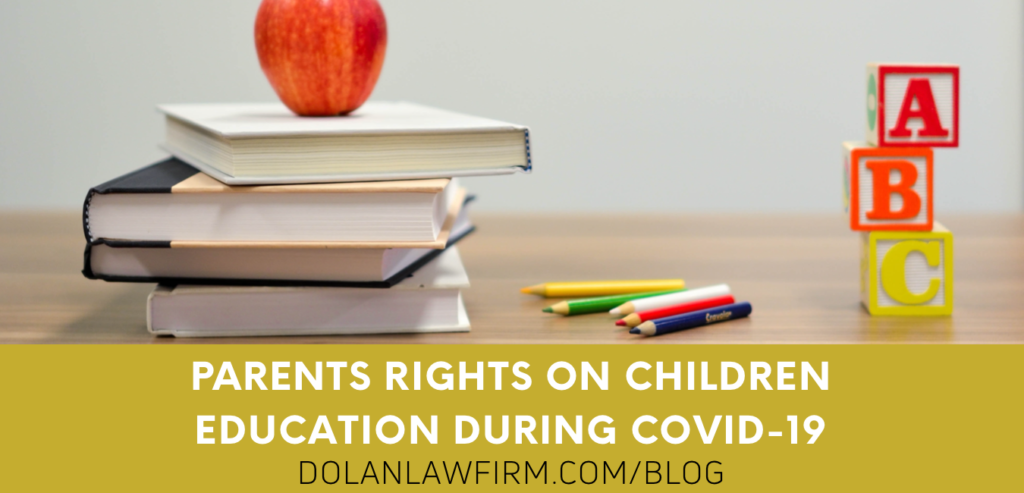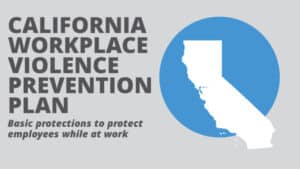Written by Christopher B. Dolan and Aimee E. Kirby
This week’s question comes from Sunny:
Dear Mr. Dolan: I am a mother that lives in San Francisco and I have two children. My son is in seventh grade and my daughter is in high school. Both my husband and I work full-time, and my husband is required to go into his office. My employer has allowed employees to work remotely since the pandemic began. While I appreciate the hard work teachers have put into their instruction during this pandemic, both my children are falling behind and having issues emotionally with being confined to a tiny home. Early on, my son had an IEP (Individualized Education Plan) that then became a 504. (A 504 plan provides services and changes to learning environments to let students with a disability learn alongside peers.) My son has transitioned out of the 504, but now his issues have returned, and are worse. I am exhausted trying to work, help my kids learn and maintain any sanity. I read recently that we will transition soon back to full-time instruction in California, yet I am not getting a clear picture from our school district. The possible return makes me both excited and nervous. I am rambling, but I guess my question is, what are our rights as parents to our children’s education?
Dear Sunny: I am so sorry to hear that your children are struggling. The 2020-21 school year has been a challenging time for parents and working parents. Your question, although it seems simple, is quite complicated. We found ourselves trying to juggle a pandemic and our children’s educational instruction. California has been a hotbed for COVID infections and has endured complete stay-at-home orders and modified stay-at-home orders, which frequently vary between counties. Both private and public schools have sought educational waivers to reopen under state guidelines issued by the California Department of Public Health. While private schools have been granted waivers, the public school system seems to be taking longer to be granted exemptions, and these students have primarily been remote for a year. The staff of our school systems and their unions also has to examine the fact that educators weren’t placed on the first tier of immunizations. Many classrooms did not comply with distance guidelines, and schools didn’t have a plan for outbreak tracking/containment. Getting one student through the different periods in a day became impossible without exposing everyone multiple times a day.
The California Constitution has guaranteed children a free primary and secondary education since 1879 under Article IX, Section 5. The article states:
“The Legislature shall provide for a system of typical school by which a free school shall be kept up and supported in each district at least six months in every year, after the first year in which a school has been established.”
Therefore, your children are entitled to a free education which includes computers and materials as needed to be supplied to them under California Education Code Section 43503. But how does one provide a proper education during a worldwide pandemic?
Under the state Education Code 43500, distance learning means instruction in which the pupil and instructor are in different locations and pupils are under the general supervision of a certificated employee of the educational agency. Because of the outbreak, schools were forced to go remote entirely and then attempt a hybrid approach at times for special education.
Parents have struggled with the time dedicated to online courses. I have heard parents complain that courses have either been too much or lack proper support and understanding for complicated subjects such as math and chemistry. Sadly, just as the term “distance learning” is new to the Education Code, the mixture of remote, hybrid, and in-person instruction is something that we had lacked an outline for before this pandemic. Due to health concerns with COVID-19, in-person instruction has been limited because the state guidelines could not be followed in most middle schools and high schools. Elementary schools had more freedom due to the curriculum being primarily based on a single classroom assignment. Many elementary schools have now opened or are scheduled to open, with districts considering what to do with middle-school and high-school students.
The Education Code provides free education; however, it does not dictate how a school district administers a program (whether through remote, hybrid or in-person). In-person instruction becomes even more complicated during a pandemic when IEPs (Individualized Education Programs) and 504 plans are in effect. These students need in-person instruction, sometimes with further accommodations and often cannot progress with complete online instruction.
Sadly, besides providing free instruction, there is very little guidance about mandating in-person education instead of remote learning. We have to look to the state’s opening guidelines and the U.S. Centers for Disease Control and Prevention’s recommendations and try to do the best we can with weighing our children’s emotional and physical health with the value of being in a classroom. I am hopeful that life will return to life, albeit a different one, shortly.










